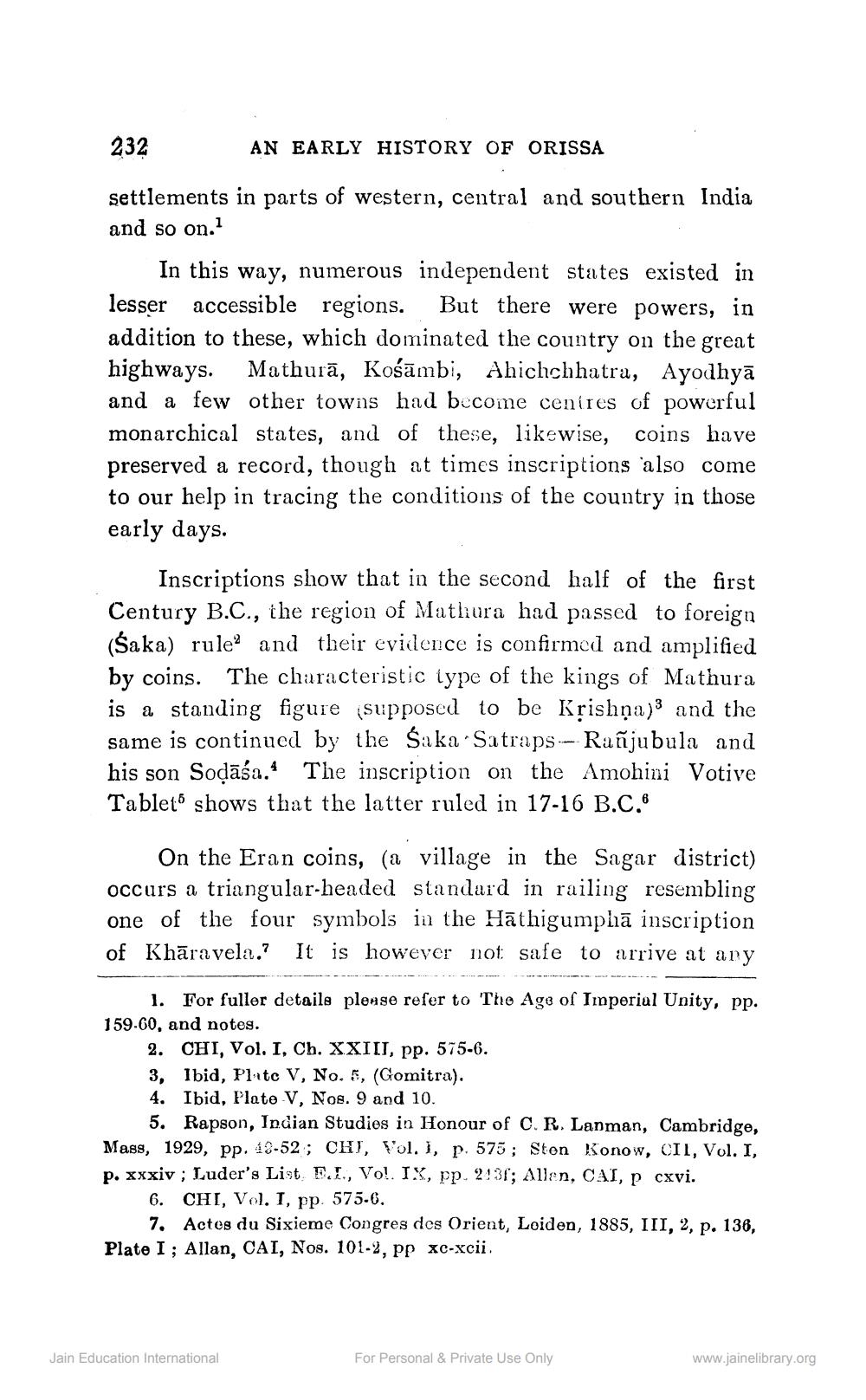________________
232 AN EARLY HISTORY OF ORISSA settlements in parts of western, central and southern India and so on."
In this way, numerous independent states existed in lesser accessible regions. But there were powers, in addition to these, which dominated the country on the great highways. Mathurā, Kośāmbi, Ahichchhatra, Ayodhyā and a few other towns had become centres of powerful monarchical states, and of these, likewise, coins have preserved a record, though at times inscriptions also come to our help in tracing the conditions of the country in those early days.
Inscriptions show that in the second half of the first Century B.C., the region of Mathura had passed to foreign (Saka) rule” and their evidence is confirmed and amplified by coins. The characteristic type of the kings of Mathura is a standing figure supposed to be Kțishņa); and the same is continued by the Śaka Satraps-- Rañjubula and his son Sodāśa. The inscription on the Amohini Votive Tablet shows that the latter ruled in 17-16 B.C.
On the Eran coins, (a village in the Sagar district) occurs a triangular-headed standard in railing resembling one of the four symbols in the Hāthigumphā inscription of Khāra vela. It is however not safe to arrive at any
1. For fuller details please refer to The Age of Imperial Unity, pp. 159.60, and notes.
2. CHI, Vol. I, Ch. XXIII, pp. 575-6. 3, Ibid, Platc V, No. 5, (Gomitra). 4. Ibid, Plate V, Nos. 9 and 10.
5. Rapson, Indian Studies in Honour of C.R. Lanman, Cambridge, Mass, 1929, pp. 19-52 ; CHT, Vol. I, p. 575 ; Ston Konow, CII, Vol. I, p. xxxiv ; Luder's List F.I., Vol. IX, pp. 2:31; Allen, CAI, pcxvi.
6. CHI, Vol. I, pp. 575.6.
7. Actes du Sixieme Congres des Orient, Loiden, 1885, III, 2, p. 136, Plate I ; Allan, CAI, Nos. 101-2, pp xc-xcii.
Jain Education International
For Personal & Private Use Only
www.jainelibrary.org




